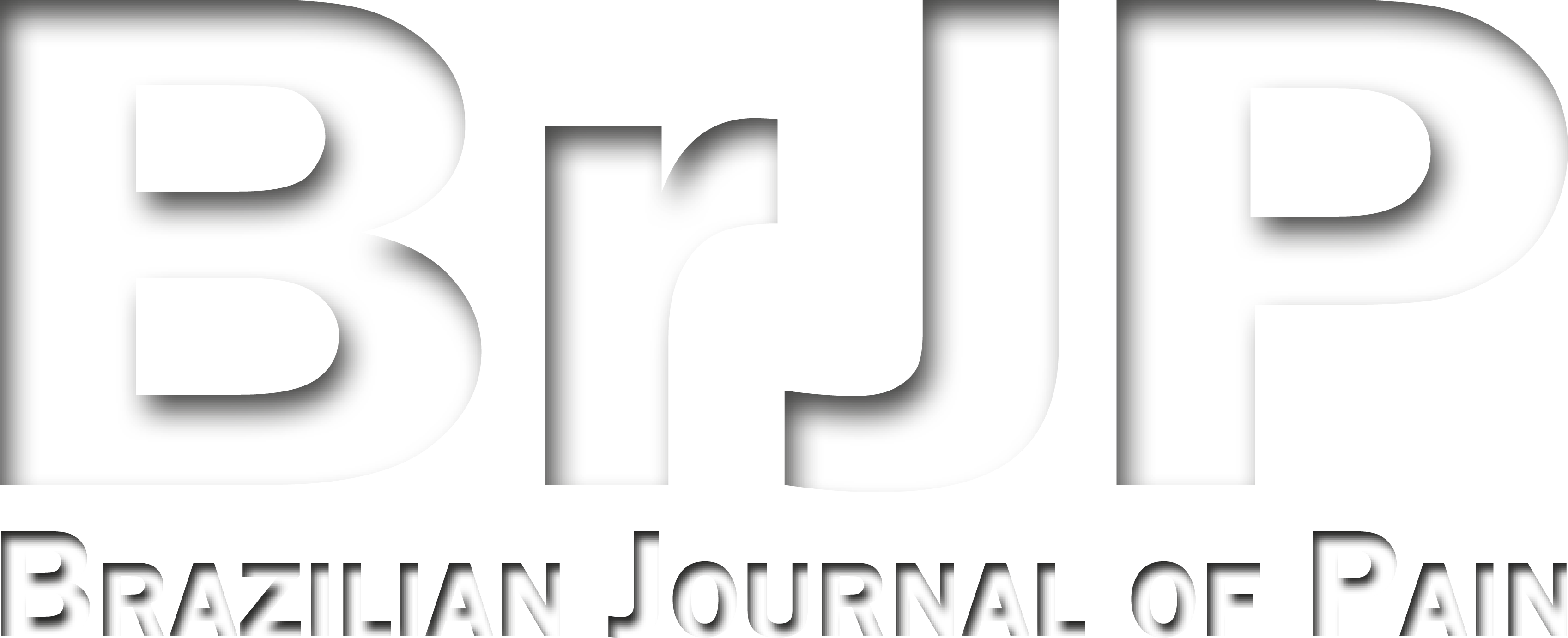Scapular dyskinesis was not associated with pain and function in male adolescent athletes
Discinese escapular não está associada à dor e função no ombro dos adolescentes atletas
Valéria Mayaly Alves de Oliveira; Hitalo Andrade da Silva; Ana Carolina Rodarti Pitangui; Muana Hiandra Pereira dos Passos; Rodrigo Cappato de Araújo
Abstract
Keywords
Resumo
Palavras-chave
Referências
Beckett M, Hannon M, Ropiak C, Gerona C, Mohr K, Limpisvasti O. Clinical assessment of scapula and hip joint function in preadolescent and adolescent baseball players. Am J Sports Med. 2014;42(10):2502-9.
Kibler WB, Sciascia A, Wilkes T. Scapular dyskinesis and its relation to shoulder injury. J Am Acad Orthop Surg. 2012;20(6):364-72.
Astolfi MM, Struminger AH, Royer TD, Kaminski TW, Swanik CB. Adaptations of the shoulder to overhead throwing in youth athletes. J Athl Train. 2015;50(7):726-32.
Cools AM, Johansson FR, Borms D, Maenhout A. Prevention of shoulder injuries in overhead athletes: a science-based approach. Braz J Phys Ther. 2015;19(5):331-9.
Guney H, Harput G, Colakoglu F, Baltaci G. The effect of glenohumeral internal-rotation deficit on functional rotator-strength ratio in adolescent overhead athletes. J Sport Rehabil. 2016;25(1):52-7.
Struyf F, Nijs J, De Graeve J, Mottram S, Meeusen R. Scapular positioning in overhead athletes with and without shoulder pain: a case-control study. Scand J Med Sci Sports. 2011;21(6):809-18.
Kibler WB, Ludewig PM, McClure PW, Michener LA, Bak K, Sciascia AD. Clinical implications of scapular dyskinesis in shoulder injury: the 2013 consensus statement from the "Scapular Summit". Br J Sports Med. 2013;47(14):877-85.
Kibler WB, McMullen J. Scapular dyskinesis and its relation to shoulder pain. J Am Acad Orthop Surg. 2003;11(2):142-51.
Ludewig PM, Reynolds JF. The association of scapular kinematics and glenohumeral joint pathologies. J Orthop Sports Phys Ther. 2009;39(2):90-104.
Clarsen B, Bahr R, Andersson SH, Munk R, Myklebust G. Reduced glenohumeral rotation, external rotation weakness and scapular dyskinesis are risk factors for shoulder injuries among elite male handball players: a prospective cohort study. Br J Sports Med. 2014;48(17):1327-33.
Timmons MK, Thigpen CA, Seitz AL, Karduna AR, Arnold BL, Michener LA. Scapular kinematics and subacromial-impingement syndrome: a meta-analysis. J Sport Rehabil. 2012;21(4):354-70.
Oyama S, Myers JB, Wassinger CA, Daniel Ricci R, Lephart SM. Asymmetric resting scapular posture in healthy overhead athletes. J Athl Train. 2008;43(6):565-70.
Uhl TL, Kibler Ben W, Gecewich B, Tripp BL. Evaluation of clinical assessment methods for scapular dyskinesis. Arthroscopy. 2009;25(11):1240-8.
Struyf F, Nijs J, Meeus M, Roussel NA, Mottram S, Truijen S. Does scapular positioning predict shoulder pain in recreational overhead athletes. Int J Sports Med. 2014;35(1):75-82.
Madsen PH, Bak K, Jensen S, Welter U. Training induces scapular dyskinesis in pain-free competitive swimmers: a reliability and observational study. Clin J Sport Med. 2011;21(2):109-13.
Myers JB, Oyama S, Hibberd EE. Scapular dysfunction in high school baseball players sustaining throwing-related upper extremity injury: a prospective study. J Shoulder Elbow Surg. 2013;22(9):1154-9.
Dayanidhi S, Orlin M, Kozin S, Duff S, Karduna A. Scapular kinematics during humeral elevation in adults and children. Clin Biomech. 2005;20(6):600-6.
Struyf F, Nijs J, Horsten S, Mottram S, Truijen S, Meeusen R. Scapular positioning and motor control in children and adults: a laboratory study using clinical measures. Man Ther. 2011;16(2):155-60.
Corlett EN, Manenica I. The effects and measurement of working postures. Appl Ergon. 1980;11(1):7-16.
Quatman-Yates CC, Gupta R, Paterno MV, Schmitt LC, Quatman CE, Ittenbach RF. Internal consistency and validity of the Quick DASH instrument for upper extremity injuries in older children. J Pediatr Orthop. 2013;33(8):838-42.
Cole TJ, Bellizzi MC, Flegal KM, Dietz WH. Establishing a standard definition for child overweight and obesity worldwide: international survey. BMJ. 2000;320(7244):1240-3.
Wilk KE, Obma P, Simpson CD, Cain EL, Dugas JR, Andrews JR. Shoulder injuries in the overhead athlete. J Orthop Sports Phys Ther. 2009;39(2):38-54.
Myklebust G, Hasslan L, Bahr R, Steffen K. High prevalence of shoulder pain among elite Norwegian female handball players. Scand J Med Sci Sports. 2011;23(3):288-94.
Wilk KE, Macrina LC, Fleisig GS, Porterfield R, Simpson 2nd CD, Harker P. Correlation of glenohumeral internal rotation deficit and total rotational motion to shoulder injuries in professional baseball pitchers. Am J Sports Med. 2011;39(2):329-35.
Kibler WB, Sciascia A. Current concepts: scapular dyskinesis. Br J Sports Med. 2010;44(5):300-5.
Kibler WB, Uhl TL, Maddux JW, Brooks PV, Zeller B, McMullen J. Qualitative clinical evaluation of scapular dysfunction: a reliability study. J Shoulder Elbow Surg. 2002;11(6):550-6.
Tucci HT, Martins J, Sposito Gde C, Camarini PM, de Oliveira AS. Closed kinetic chain upper extremity stability test (CKCUES test): a reliability study in persons with and without shoulder impingement syndrome. BMC Musculoskelet Disord. 2014;15:1.
Oliveira VM, Batista LD, Pitangui AC, Araújo RC. Effectiveness of Kinesio Taping in pain and scapular dyskinesis in athletes with shoulder impingement syndrome. Rev Dor. 2013;14(1):27-30.
Endo K, Yukata K, Yasui N. Influence of age on scapulo-thoracic orientation. Clin Biomech. 2004;19(10):1009-13.
Submetido em:
03/09/2017
Aceito em:
22/01/2018


